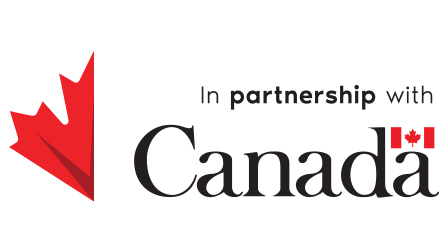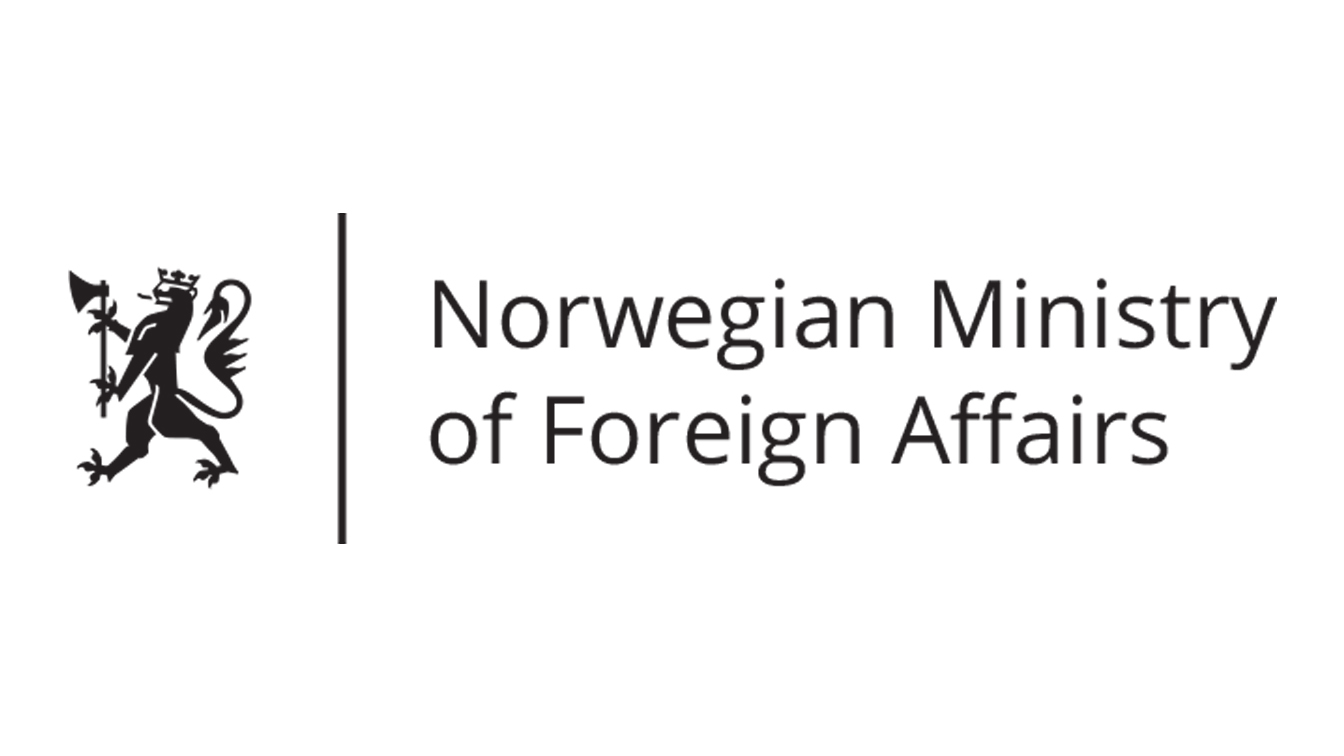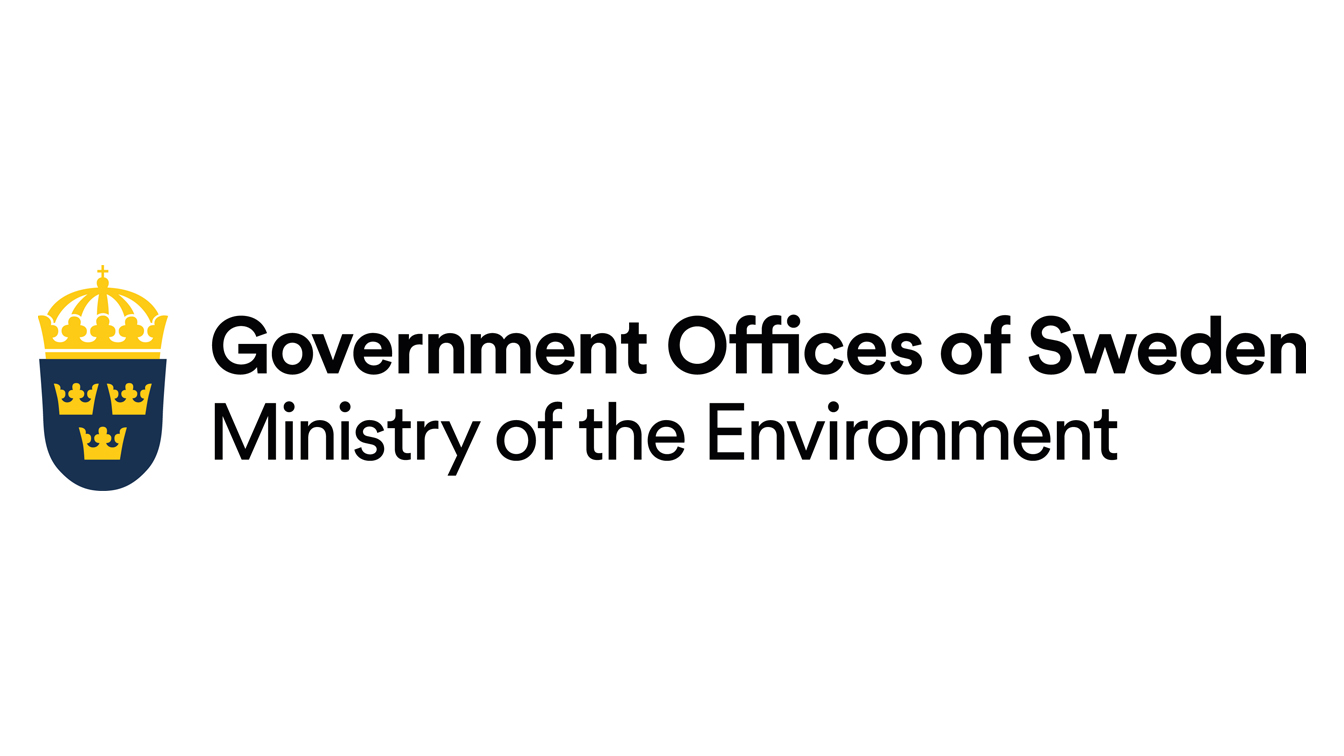The Incremental Approach to Governing Mercury
Still Only One Earth: Lessons from 50 years of UN sustainable development policy
Years of activism on mercury poisoning gave rise to the Minamata Convention on Mercury. Going forward, governments need to better regulate mercury use in artisanal and small-scale gold mining, while balancing human health and poverty alleviation. (Download PDF) (See all policy briefs) (Subscribe to ENB)
In 1972, 15-year-old Shinobu Sakamoto left her fishing village in Japan to attend the world’s first global conference on the human environment in Stockholm, Sweden. The journey was a long one, but especially so for Sakamoto, who was disabled due to methylmercury poisoning in utero. She is one of the many afflicted with what would become known as Minamata disease, named after the city where the poisoning took place.
Sakamoto is one of the survivors who has bravely spoken out about the effects of Minamata disease. In Stockholm, their stories resonated with people who had recently read Rachel Carson’s Silent Spring, about the dangers of pollutants. Many might have also seen “Death-Flow from a Pipe,” a photo essay documenting the effects of Minamata disease, put together by photojournalist W. Eugene Smith for Life Magazine in June 1972. The perils of chemical pollution and mercury poisoning had become mainstream news, heightened by the efforts of Sakamoto and other survivors.
These dangers remain with us today. In the United States in 2010, more than 200,000 children were born to mothers with methylmercury levels high enough to put their babies at risk of neurological disease. Children in the Faroe Islands suffer developmental delays as their traditional food sources are contaminated with methylmercury (Selin & Selin, 2020, p. 4). Inuit communities in Canada face similar dangers, due to contamination in whales, walruses, and fish.
The fetal Minamata disease patients including myself are getting worse, year by year. Many people are still suffering and struggling from pollution. Today, I must repeat my message — Minamata disease is not over. Pollution must end.

In 2017, 45 years after her first journey to Stockholm, Sakamoto travelled to Geneva, Switzerland. She gave an opening address to the parties to the Minamata Convention, a treaty named after Minamata disease. The treaty aims to reduce mercury releases into the atmosphere, land, and water to protect human health and the environment.
It has been a long road from when mercury was identified as an issue of global concern to action under a global, legal-binding treaty. Yet why has mercury successfully moved from agenda setting to action, while other heavy metals that are toxic and persistent in the environment, such as cadmium and lead, still lack legally binding global action? And what still needs to be done to protect human health from heavy metals?
Quicksilver: Useful, but Dangerous
Mercury is sometimes called quicksilver because is it the only metallic element that is a liquid at room temperature. For centuries, the shiny, silvery liquid has been used for a wide range of products and processes. Mercury is present in some consumer goods, such as fluorescent lightbulbs, thermometers, and dental amalgam. It is a naturally occurring element, released into the air and water through the weathering of rock containing mercury ore.
Increasingly, mercury releases are due to human activities. Artisanal and small-scale gold mining (ASGM), industrial processes, waste incineration, and fossil fuel production contribute to mercury releases into the atmosphere and water (see Table 1).
| Category | Mercury emissions estimates |
|---|---|
| Artisanal and small-scale mining | 847,658 |
| Stationary combustion of coal | 473,777 |
| Non ferrous metals production | 326,657 |
| Cement production | 233,168 |
| Waste from products | 146,938 |
| Vinyl chlorine monomer | 58,268 |
| Biomass burning | 51,860 |
| Ferrous metals production | 39,903 |
| Clor alkali production | 15,146 |
| Waste incineration | 14,944 |
| Oil refining | 14,377 |
| Stationary combustion of oil and gas | 7,130 |
| Cremation | 3,768 |
Source: UNEP (2019). Global Mercury Assessment 2018.
The largest contributor is non-industrial gold mining, where workers use mercury to extract gold from the surrounding rock. This process has been in use for centuries. In 1558, the “patio process” was invented to separate silver from the surrounding ore using mercury. It helped fuel the colonial empires. For example, Spanish colonies in the Americas used mercury shipped from Southern Spain and Peru to mine silver for the empire. Today, more than 500,000 workers in seven countries work in the sector. The Democratic Republic of the Congo employs the most globally, but Sudan, China, Ghana, Côte d’Ivoire, Mali, and Tanzania also have significant workforces in the ASGM sector (IGF, 2017).
It is a complex development issue with few easy answers. The sector is informal and unregulated. Many of the workers are poor and this work is an important source of income. They use mercury because it is the most economical option, while larger mining facilities use more expensive processes. It has long been, and continues to be, one of the central implementation challenges of global efforts to reduce the use of mercury.
Building the Foundation of Heavy Metals Governance
The Stockholm Conference on the Human Environment catalyzed action on heavy metals through legal instruments that referenced the Stockholm Declaration and Action Plan. Several were agreements to prohibit the dumping of mercury, lead, and cadmium into the marine environment, particularly the waters around Europe and the North Atlantic. The International Convention on the Prevention of Marine Pollution by Dumping of Wastes and other Matter (London Convention) and the Convention for the Prevention of Marine Pollution by Dumping from Ships and Aircraft (Oslo Convention) were adopted in 1972. The Convention for the Prevention of Marine Pollution from Land-Based Sources (Paris Convention) joined the list in 1974. The Baltic Sea was protected by the Helsinki Convention in 1974 and the Mediterranean Sea by the 1976 Dumping Protocol to the Barcelona Convention. By 1984, the European Economic Community set limits and water quality objectives to eliminate mercury emissions from the key polluting industries (Selin & Selin, 2006).
Action to protect the marine environment from mercury strengthened over time but remained regional. The Oslo and Paris Conventions joined to form the Convention for the Protection of the Marine Environment of the North-East Atlantic (OSPAR). It set a goal that “every endeavour will be made to move towards the target of cessation of discharges, emissions and losses of hazardous substances of concern by the year 2020.” But, as noted in 2000, the Convention alone cannot address all sources of mercury pollution and would have to work closely with other international bodies (OSPAR, 2000). The Mediterranean Action Plan set a 2025 goal for reducing mercury pollution from land-based sources.
In the 1980s and 1990s, countries began to expand controls of heavy metals beyond the marine environment. The Basel Convention on the Control of Transboundary Movements of Hazardous Wastes and Their Disposal was adopted in 1989. Waste containing, contaminated with, or consisting of mercury, cadmium, and lead were included as hazardous wastes. Any international trade in these wastes would need the prior informed consent of the importing country. Countries also developed technical guidelines to help manage these wastes in an environmentally sound manner.
The Convention on Long-Range Transboundary Air Pollution (CLRTAP) was established by European and North American countries under the auspices of the United Nations Economic Commission for Europe. In 1998, parties adopted a Protocol on Heavy Metals, which included mercury, lead, and cadmium. Thus, for Europe and North America, efforts to protect the air and water from mercury were well underway.
But evidence about the global extent of heavy metal pollution continued to mount. The Arctic Monitoring and Assessment Programme (AMAP) reported in 1998 that levels of heavy metals were increasing, even though mercury is not produced or used in the Arctic. The findings showed that despite reductions in mercury emissions in North America and Western Europe in the 1980s, global emissions were increasing (AMAP, 2002). The report also showed atmospheric deposition of lead was drastically reduced where the use of leaded gasoline was banned. There was less data available on cadmium. AMAP recommended further monitoring to establish trends.
In response to the AMAP report, the Arctic Council called for the United Nations Environment Programme (UNEP) to undertake a global assessment of mercury. The CLRTAP executive body separately sent its own call for a global assessment. In 2001, the UNEP Governing Council responded and launched a global mercury assessment, which concluded in 2003 there was “sufficient evidence of significant global adverse impacts to warrant international action to reduce the risks to human health and/or the environment” (UNEP, 2013). Nearly 30 years after the Stockholm Conference, mercury was on top of the global agenda.
Mercury Moves on Alone
Countries were divided on how to respond to the Global Mercury Assessment. Switzerland, Norway, and the European Union (EU) called for a global treaty on mercury and perhaps heavy metals more broadly. Such a treaty would have included cadmium and lead, like the CLRTAP Protocol on Heavy Metals. But others, including the US, Canada, Japan, Russia, Australia, New Zealand, and several developing countries, preferred a voluntary approach (Selin, 2014; Sun, 2017). They suggested the time and expense of negotiating a treaty could be better directed to more targeted, flexible approaches. There was also treaty fatigue, given recent negotiations to adopt the Rotterdam Convention on the Prior Informed Consent Procedure for Certain Hazardous Chemicals and Pesticides in International Trade in 1998 and the Stockholm Convention on Persistent Organic Pollutants in 2001 (Bai, et al., 2005; Selin, 2014).
The stalemate continued until 2007, when the UNEP Governing Council established a working group to explore the options. The Open-ended Working Group to Review and Assess Measures to Address the Global Issue of Mercury recommended a mix of measures, one legally binding option and three voluntary measures. But in 2009, following the election of US President Barack Obama, a “tipping point” occurred, when the US agreed to negotiate a legally binding instrument. This convinced Australia, Japan, China, and India (Selin, 2014; Sun, 2017). The UNEP Governing Council agreed to launch negotiations, but for mercury only. But the disagreement of whether to include cadmium and lead persisted. While the EU and other countries pushed for a wider scope, countries ultimately agreed that any change to the negotiating committee’s mandate to move beyond mercury would require the Council’s agreement. Effectively, this ruled out a broader treaty on heavy metals.
The Global Mercury Partnership, a voluntary arrangement hosted by UNEP, played a valuable part in the negotiations. The Partnership, which includes governments, non-governmental organizations (NGOs), academics, and the private sector, was created in 2005, and has seven partnership areas that target key sources of mercury pollution, including ASGM, chlor-alkali production, and coal combustion, as well as waste management, supply and storage, and research on mercury air transport (UNEP, 2009). Partnership membership grew rapidly once treaty negotiations began. The range of expertise in the Partnership led to a series of briefings on key issues before each negotiation session, that were attended by delegates keen to ask questions (Sun, 2017).
Negotiations continued between 2010 and 2013. As with every negotiation, there were difficult issues to sort out, including supply and trade, use in products and processes, emissions and releases, support to developing countries, and compliance (Selin, 2014). In 2013, the treaty was adopted and opened for signature. The ceremony took place in Minamata, giving its name to the Minamata Convention on Mercury.
The Minamata Convention on Mercury
Finally, the world had a dedicated legal instrument for mercury emissions and releases regardless of the source or where the mercury ends up in water, air, or land. The Convention covers the entire life cycle of mercury, from production to waste (Selin 2014; Selin & Selin, 2020). The Minamata Convention, which entered into force in 2017, became the first global agreement on human health and the environment in nearly a decade and is unique for extensively considering health and engaging with the health community.
The Convention sets ambitious objectives that could have a rapid effect on the supply of and demand for mercury. It bans new mercury mines and existing mines can continue for only 15 years after a country joins the treaty. The Convention also phases out and phases down the use of mercury in a number of products and processes. Several of these phase-outs had a 2020 deadline, meaning that beginning in 2021, parties can no longer manufacture or trade in products that use or contain mercury. Such mercury-containing products include some batteries, compact fluorescent lamps under 30 watts, cosmetics (such as skin lightening creams), pesticides, and thermometers. Chlor-alkali production using mercury, formerly a major source, is to end in 2025. But countries can apply for an extension of five years.
“The name Minamata Convention contains the world commitment that serious environmental pollution and human health damage like Minamata disease must not happen again anywhere in the world.
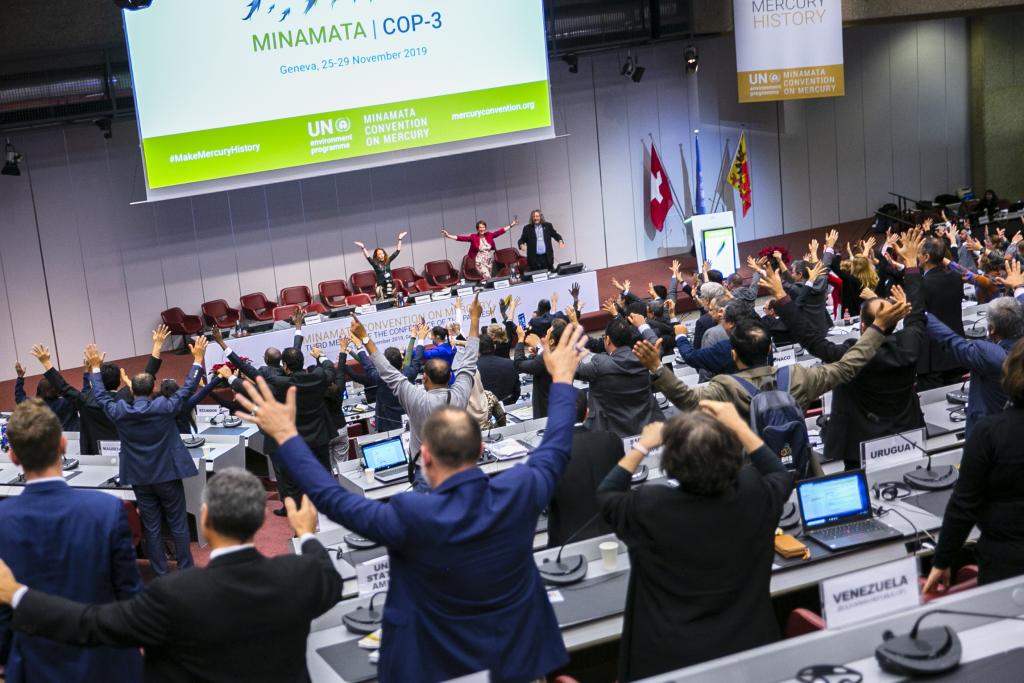
session. (Photo: Sean Wu, IISD/ENB)
The role of other bodies, particularly the World Health Organization (WHO), and their expertise is visible in many of these recommendations (Selin, 2014). The WHO and the World Dental Federation supported a phase down, leading dental amalgam to become the only product listed for restricted use. Vaccines are excluded from the controls of the Convention. Given the lack of evidence of negative effects of mercury use in vaccines compared to the risks associated with limiting access to some vaccines, the WHO urged parties to exclude these products.
The Convention carefully handles ASGM and its use of mercury to mine gold. Countries with “more than insignificant ASGM” are to develop national action plans for the sector. These plans include national objectives and reduction targets, which could help promote accountability and transparency of efforts. Baseline estimates of the mercury used, and the practices of the sectors, will help formulate these goals. The plans also call for steps to formalize or regulate the sector, strategies to reduce emissions, releases, and exposure to mercury in the sector, and a public health strategy to protect and treat ASGM miners and their communities.
For mercury emissions from coal-fired power plants and coal-fired industrial boilers, there is a similar nationally driven approach. China and India preferred a voluntary approach while developed countries, the African Group, and NGOs wanted mandatory limits. The Convention allows countries to choose which technologies and practices are economically viable. There are provisions on waste and storage, and a financial mechanism to provide resources to developing countries to implement the Convention.
It is too early to tell if the Minamata Convention will be effective. A common way to assess a treaty’s effectiveness is through a formal effectiveness evaluation, with a list of agreed-upon indicators of success. The Convention parties agreed to a “minimized” version of the effectiveness evaluation at its 2019 meeting, after disagreements about which indicators to use (Wagner, et. al., 2019). Only after the first evaluation is completed will we have a sense of the Convention’s impact on the environment and health.
What About Other Heavy Metals?
Why did countries separate mercury from the other heavy metals? Regional approaches considered the heavy metals together, particularly to protect marine environments from dumping. There was support from the EU, Switzerland, Norway, and others to address cadmium, lead, and mercury together in one treaty. All three heavy metals are dangerous to human health. Cadmium can damage the kidneys, liver, and heart. Lead damages the brain, kidneys and, like mercury, the nervous system. But other countries disagreed that the three heavy metals should be grouped together. Potentially, two reasons may explain why their arguments prevailed and led to a treaty for mercury alone. Both can tell us a lot about why we see global treaties arise for some issues, but not others.
First, the mercury treaty is focused on a single issue with a discrete list of sectors involved in its production and use. A global treaty that included lead and cadmium would have to address numerous sources that are largely different. Coal can lead to mercury and cadmium emissions, and batteries contain lead and mercury. But there are many differences, which would complicate negotiations. A heavy metals treaty would have to address the range of sources, from industrial processes and fertilizers to everyday products, such as paint and cosmetics. That is a big list for a single treaty. There would a wide range of interests on the table to reconcile for many sectors. Focusing on a single issue helped conclude a treaty with timelines for phase-outs and phasedowns.
Second, science played a strong role in presenting mercury as a pressing, global threat. The AMAP assessment showed increasing levels of mercury in the Arctic but cited a lack of data for cadmium. In 2007, the UNEP Governing Council requested additional data on lead and cadmium to help fill information gaps (Decision 24/3 III). Individual countries had already taken strong action on lead. Leaded gasoline had been banned in most countries and by 1999, unleaded gasoline accounted for 80% of worldwide sales (OECD, 1999). In the 1990s and 2000s, the price of mercury was historically low, but started to rise in 2003 due to increased demand from the ASGM sector, despite import bans from the US and the EU (Selin & Selin, 2020, p.60-1). When the UNEP Governing Council agreed to form the Global Mercury Partnership and later to start treaty negotiations, demand in some parts of the world was increasing. Coupling science with evidence of an increasing threat put a spotlight on mercury.
Lead and cadmium are not completely forgotten. The UNEP Governing Council, now the United Nations Environment Assembly, discusses these heavy metals regularly. UNEP has a mandate to provide capacity building support, particularly to eliminate and safely dispose or recycle lead-acid batteries and lead paint. There are also voluntary partnerships, including the Partnership for Clean Fuels and Vehicles and the Global Alliance to Eliminate Lead Paint.
Moving Forward
The world is safer from mercury poisoning than it was 50 years ago, because of the tireless and brave activism of those with Minamata disease and decades of scientific monitoring. The Minamata Convention aims to protect those vulnerable to mercury exposure. It is too early to tell if this relatively young treaty will reach its lofty objectives. Thus, parties need to move forward with the effectiveness evaluation and strengthen its list of indicators and data collection.
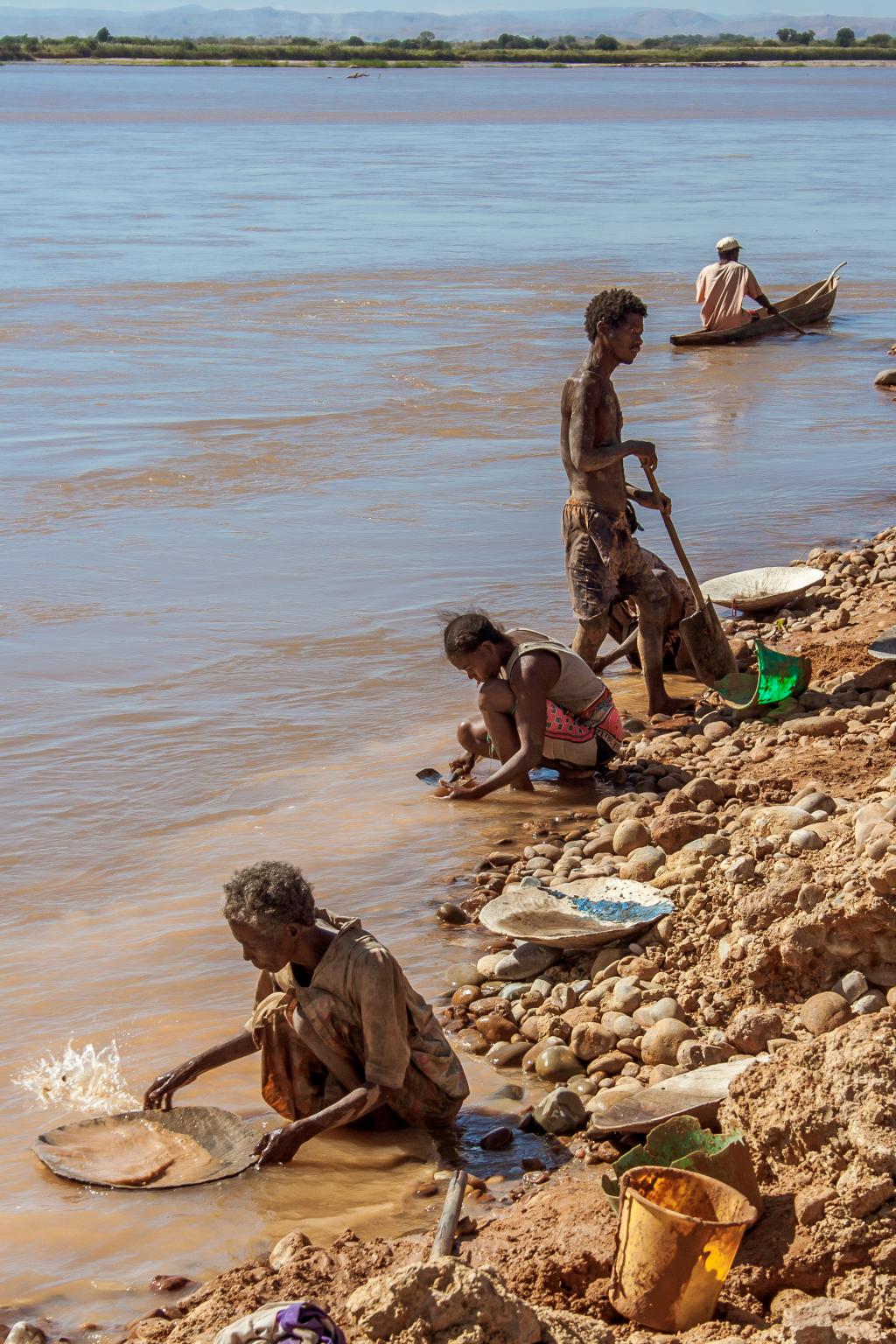
Other difficult tasks lie ahead. The Convention needs to protect those working in remote areas in the ASGM sector. ASGM takes the environmental treaty into the world of global development, trying to address the need for poverty alleviation at the same time as reducing mercury use. This is uncharted territory for many environmental treaties. It will test the provisions in the treaty and the ability of countries to work together to achieve multiple goals at once.
How they address these challenges will be the legacy of the Minamata Convention and those victims it is named to honour.
Works Consulted
Bai, C., Barrios, P. Larsson Ortino, M., Sherman, R., Vavilov, A., & Xia K. (2005). Summary of the Twenty-third session of the UNEP Governing Council/Global Ministerial Environment Forum: 21–28 February 2005. Earth Negotiations Bulletin. https://enb.iisd.org/vol16/enb1647e.html
Intergovernmental Forum on Mining, Minerals and Sustainable Development. (2017). Global trends in artisanal and small-scale mining (ASM): A review of key numbers and issues. https://www.iisd.org/publications/global-trends-artisanal-and-small-scale-mining-asm-review-key-numbers-and-issues
Organisation for Economic Co-operation and Development. (1999). Phasing lead out of gasoline: An examination of policy approaches in different countries. OECD.
OSPAR. (2000). OSPAR Background Document on Mercury and Organic Mercury Compounds. https://www.ospar.org/documents?v=6904
Selin, H. (2014). Global environmental law and treaty-making on hazardous substances: The Minamata Convention and mercury abatement. Global Environmental Politics, 14(1), 1-19.
Selin, N. E., & Selin, H. (2006). Global politics of mercury pollution: The need for multi-scale governance. Review of European Community & International Environmental Law, 15(3), 258-269.
Selin, H., & Selin, N. E. (2020). Mercury stories: Understanding sustainability through a volatile element. MIT Press.
Sun, Y. (2017). Transnational public-private partnerships as learning facilitators: Global governance of mercury. Global Environmental Politics, 17(2), 21-44.
UNEP. (2009). 2007-2008 - Reporting of the mercury waste management partnership area.
UNEP. (2013). Mercury: Time to Act. https://wedocs.unep.org/handle/20.500.11822/27436
Wagner, L., Jackson, L.C., Ripley, K., & Hengesbaugh, M. (2019). Summary of the third meeting of the Conference of the Parties to the Minamata Convention on Mercury. Earth Negotiations Bulletin. https://enb.iisd.org/vol28/enb2859e.html
Additional downloads
You might also be interested in
How to Advance Sustainable Mining
Regulation of mining activities depends mainly on national frameworks and policies, but implementing good plans and practices remains problematic.
Leveraging Digital Infrastructure for Mining Community Resilience
This report explores the socio-economic impacts and potential of new technologies in the mining sector.
IISD Annual Report 2023–2024
While IISD's reputation as a convenor, a trusted thought leader, and a go-to source on key issues within the sustainable development field is stronger than ever, the work happening outside the spotlight is just as valuable.
IGF Case Study: Decarbonization of the Mining Sector
Case studies from Chile, Indonesia, and South Africa that delve into the role of the mining sector in efforts to reduce greenhouse gas (GHG) emissions.

